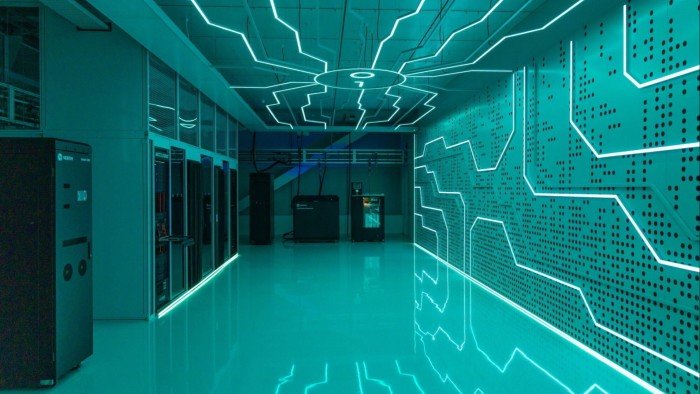Unlock the Editor’s Digest for free
Roula Khalaf, Editor of the FT, selects her favourite stories in this weekly newsletter.
Big Tech is going big on energy. Data centres for artificial intelligence applications will require extra electricity supply, which makes the energy transition a more burdensome exercise. But even so, there is a good chance that AI’s climate benefits will eventually outweigh its costs.
The immediate problem is clear. The AI boom has led to a rush to build gas-fired power plants. The intermittency of renewables means that it will be hard to make data centres truly green — which helps explain why the likes of Google are turning to still-theoretical nuclear fusion.
Yet while AI-related demand is a new addition to energy transition plans, in absolute terms it will be a relatively small part of the overall system. For context, data centres today consume 415 terawatt hours of electricity — equivalent to about 1.5 per cent of global demand, says the International Energy Agency. While the IEA predicts this will more than double to 945 TWh by 2030, electric vehicles and air conditioning will be bigger contributors to demand growth.
Meanwhile, AI’s reach is likely to be larger than its energy footprint. The technology is expected to improve the efficiency of almost everything we do. It is true of course that, for climate change purposes, cutting CO₂ today is worth more than cutting it tomorrow. But looking at the numbers at stake, if AI facilitated even modest savings on overall electricity use, it would be a net positive for the energy transition.
That looks all the more likely because some pockets of the energy system are staggeringly inefficient. The materials value chain — which produces 60bn tonnes a year of steel, glass, hydrogen, ammonia, copper and the like — uses four to five times more energy than the bare minimum required by the chemical reactions involved, according to consultancy Thunder Said Energy.
That’s an opportunity for improvement writ large. Finding new materials, catalysts or processes that can produce stuff more efficiently is the sort of ‘‘needle in a haystack” problem that AI is ideally suited to, and is helping to solve in the biotechnology sector.
In the battery space, the race is on to use AI to find better materials, and even chase a breakthrough on solid-state devices which should be smaller, lighter and could be used to store energy for longer-distance transport. Microsoft and a US government laboratory have teamed up to screen tens of millions of new solid-state electrolytes for lithium-based batteries, notes Simon Bennett from the IEA, narrowing it down to 23 potentially viable candidates.
There are plenty of others using AI models to sift through databases, too. And that’s just the low-hanging fruit. As “smart” appliances and sensors proliferate, AI should help reduce waste in energy production, transport and lots more besides. Amid a lot of hazy use cases, this one has the potential to do a power of good.


